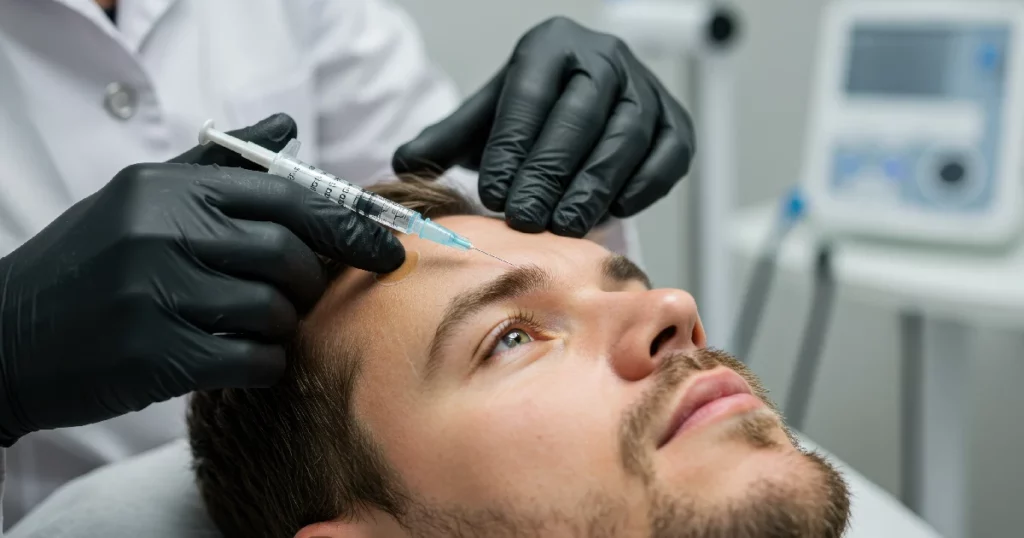Facial chemical peels have long been a trusted solution for those seeking rejuvenated, clearer skin. Originating from ancient practices, these treatments have evolved into scientifically-backed procedures that offer tangible results. They use specific chemical solutions to exfoliate the skin’s outer layers, paving the way for new, healthier skin to emerge. The process addresses common skin concerns like fine lines, sun damage, and acne scars and enhances overall skin texture and tone.
As with any skincare treatment, understanding its mechanism, benefits, and potential risks is crucial. This knowledge ensures that individuals can make informed decisions about incorporating chemical peels into their skincare regimen.
What is a Facial Chemical Peel?
A facial chemical peel is a dermatological procedure designed to improve the appearance and texture of the skin. It involves the application of a chemical solution to the face, which eventually causes the outer layer of skin to peel off. The underlying skin that replaces the peeled layer is typically smoother and less wrinkled, giving the face a refreshed and rejuvenated appearance.
The term “chemical peel” might sound intense, but the procedure can range from mild to deep, depending on the type of chemical solution used and the desired results. While intentionally causing the skin to peel might seem counterintuitive, this controlled removal of skin layers has been practiced for centuries, with modern techniques refined and developed to ensure safety and effectiveness.
A facial chemical peel aims to achieve desired aesthetic results by targeting specific skin concerns without delving into the deeper layers of the skin where more invasive procedures might reach.
Types of Chemical Peels
Chemical peels are categorized based on their target skin depth, primarily determined by the specific chemical solution used. There are three primary types of chemical peels: superficial, medium, and deep.
Superficial Peels
Also known as light or lunchtime peels, superficial peels target the outermost layer of the skin, the epidermis. They use mild acids like alpha-hydroxy acid (AHA) or beta-hydroxy acid (BHA) to exfoliate the skin gently. Because they are the mildest type of peel, they cause minimal discomfort and have a quick recovery time. Superficial peels are ideal for addressing minor skin imperfections and can be repeated more frequently than deeper peels.
Medium Peels
These penetrate both the outer and middle layers of the skin. Trichloroacetic acid (TCA) is commonly used for medium peels. They treat age spots, fine lines, and wrinkles more effectively than superficial peels. The recovery time is longer, and there’s a higher likelihood of side effects, but the results are also more pronounced.
Deep Peels
As the name suggests, deep peels penetrate the deeper layers of the skin. They often use phenol and are designed to address more severe skin issues like deeper wrinkles, scars, or precancerous growths. Given their intensity, deep peels produce the most dramatic results, but they also come with longer recovery times and a higher risk of complications. It’s also worth noting that deep peels are typically a one-time procedure, unlike superficial and medium peels, which can be repeated after a certain period.
Consider the specific skin concern, the desired outcome, and the individual’s skin type when choosing the type of chemical peel. A consultation with a dermatologist or skincare professional can help to determine the most suitable peel for an individual’s needs.
How Does a Chemical Peel Work?
A chemical peel accelerates the skin’s natural exfoliation process, allowing new, healthier skin to surface. While “chemical” might sound daunting, when performed by trained professionals, these peels can safely and effectively address various skin concerns.
1. Application of the Chemical Solution: The procedure begins with applying a specific chemical solution to the skin. This solution is formulated to induce controlled damage to the layers of the skin it’s designed to target, whether superficial, medium, or deep.
2. Inducing Exfoliation: Once applied, the chemicals in the solution break down the bonds between the skin cells. This process causes the skin to “peel” or exfoliate. The extent of the peeling depends on the type of peel used. For instance, a superficial peel might result in slight flaking, while a deep peel could lead to more significant peeling or blistering.
3. Stimulating New Skin Growth: As the damaged skin begins to peel off, it signals the body to start healing. This involves the production of new skin cells to replace the ones that have been shed. Additionally, the process stimulates collagen production, a protein responsible for skin’s elasticity and firmness.
4. Revealing Smoother Skin: The newly formed skin emerges once the peeling process is complete. This skin is generally smoother, with a more even tone and fewer imperfections than the old skin.
5. Post-Peel Healing: The skin might appear red and sensitive after the procedure. This is a natural response as the skin undergoes healing and regeneration. Proper aftercare, including moisturizing and sun protection, is crucial during this phase to ensure optimal results and prevent complications.
Who is an Ideal Candidate?
Determining the ideal candidate for a facial chemical peel is crucial for achieving the desired results and ensuring the procedure’s safety. Several factors come into play:
1. Skin Concerns: Individuals with specific skin issues such as fine lines, sun damage, mild scarring, acne, or hyperpigmentation often benefit the most from chemical peels.
2. Skin Type: While chemical peels can be tailored to various skin types, it’s essential to note that certain peels might be more suitable for specific skin tones. For instance, individuals with darker skin tones must approach certain peels cautiously to avoid unwanted pigment changes.
3. Overall Health: Good general health is a prerequisite. Those with certain medical conditions or on specific medications might need to avoid chemical peels or opt for milder versions.
4. Previous Treatments: If someone has had recent cosmetic procedures, such as dermal fillers or Botox, they might need to wait before undergoing a chemical peel.
5. Expectations: An ideal candidate should have realistic expectations. While chemical peels offer significant benefits, they are not a cure-all and might require multiple sessions for optimal results.
6. Commitment to Aftercare: Post-peel care is vital for healing and achieving results. Candidates should be willing to follow aftercare instructions diligently, including sun protection and moisturizing.
Takeaway
Ready to unveil your skin’s true potential? Trust in the expertise of Gladiators Health MD. Schedule your consultation today and journey to radiant, rejuvenated skin. Your arena of beauty awaits!



